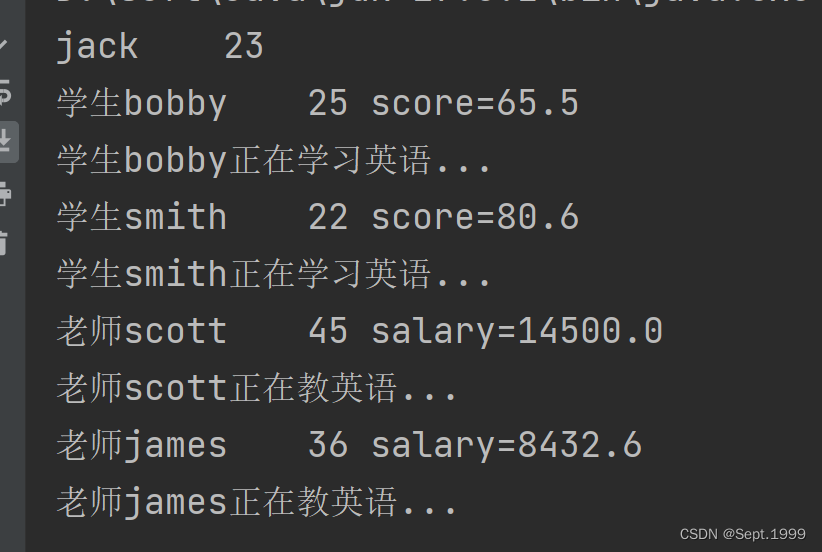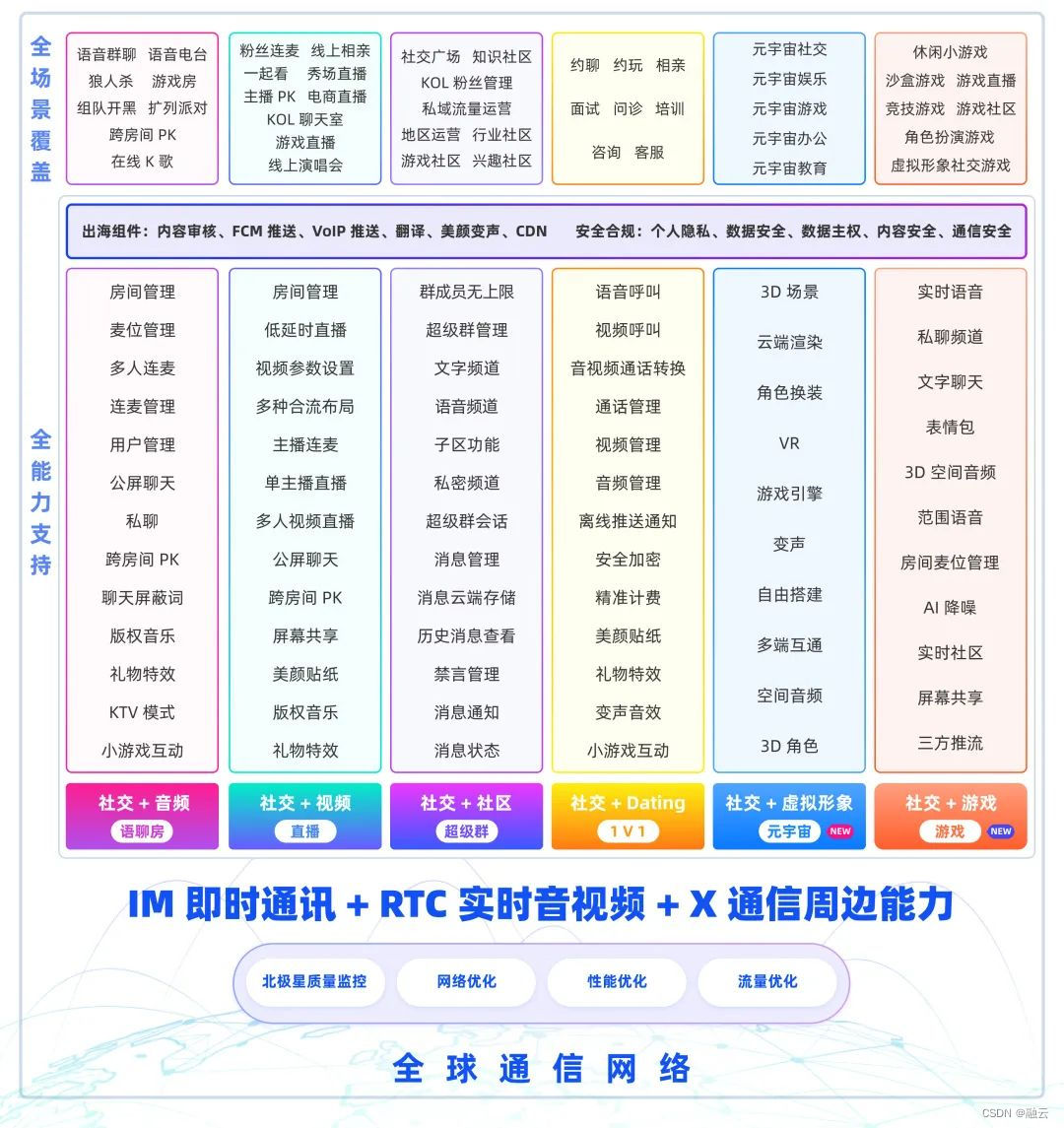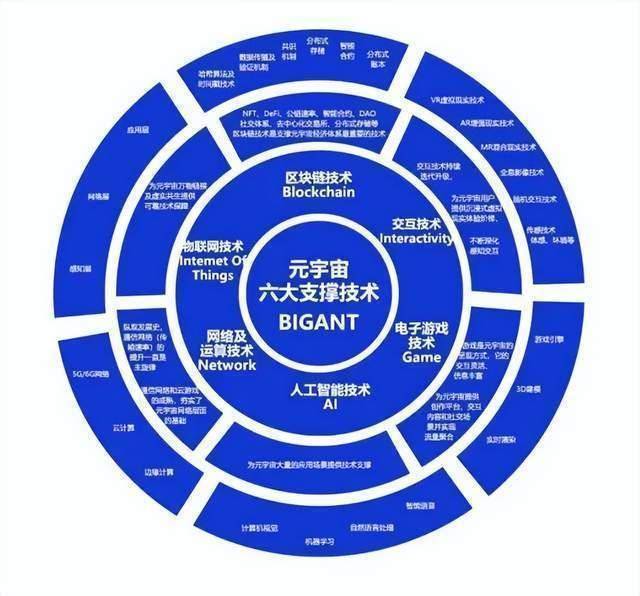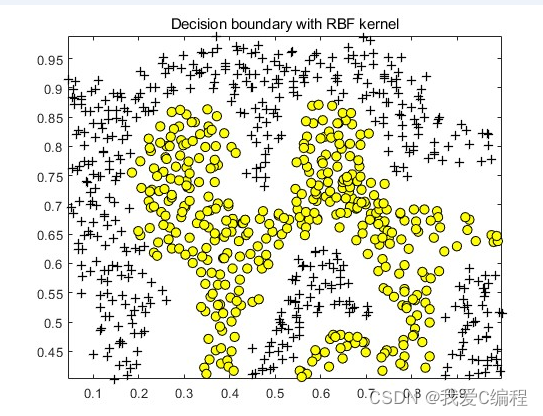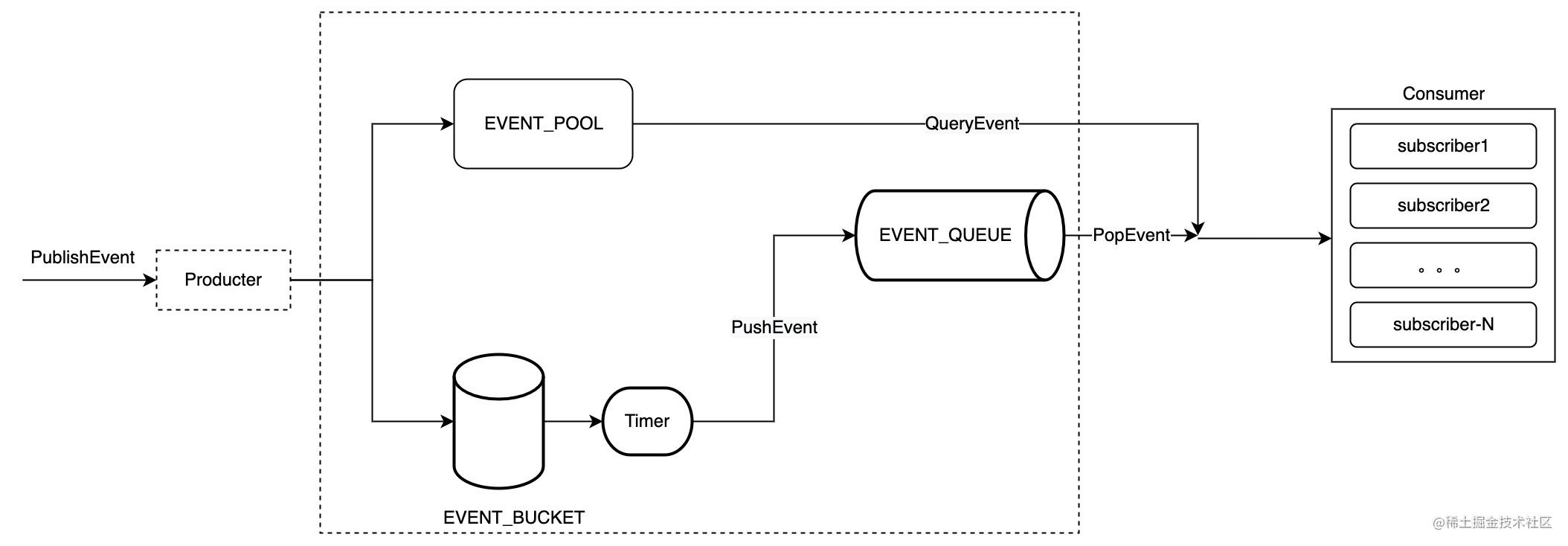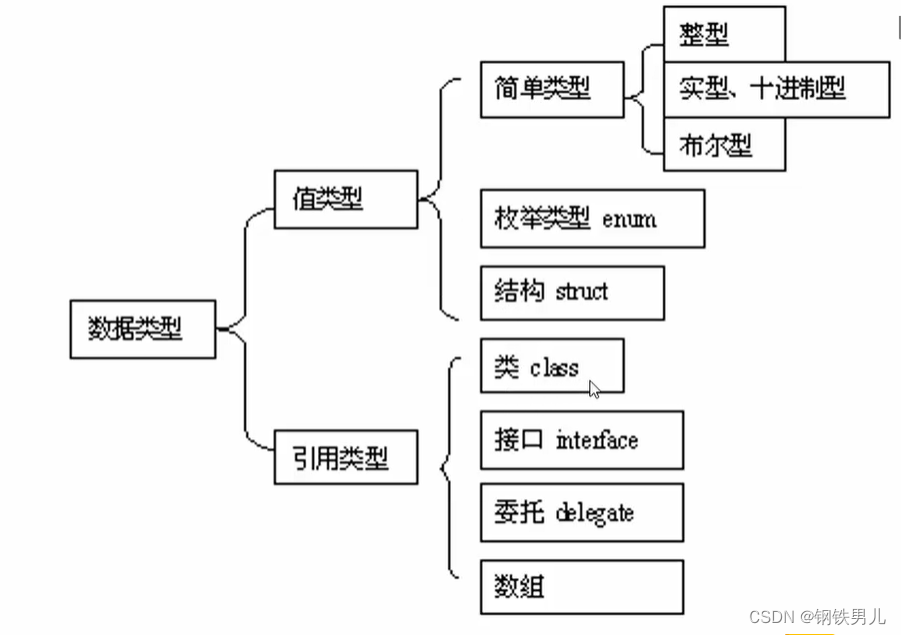目录
一、定义
二、举例说明
要求1
父类-Person
子类-Student
子类-Teacher
main类
运行结果
要求2
思路分析
main类中的代码
运行结果
一、定义
数组的定义类型为父类类型, 里面保存的实际元素类型为子类类型(也可以有父类)
二、举例说明
要求1
现有一个继承结构如下: 要求创建 1 个 Person 对象、 2 个 Student 对象和 2 个 Teacher 对象, 统一放在数组中, 并调用每个对象say 方法.

先按照要求创建父类和子类
父类-Person
package com.hspedu.poly_.polyarr_;
public class Person {
int n1 = 200;
private String name;
private int age;
public Person(String name, int age) {
this.name = name;
this.age = age;
}
public String getName() {
return name;
}
public void setName(String name) {
this.name = name;
}
public int getAge() {
return age;
}
public void setAge(int age) {
this.age = age;
}
//say()方法
public String say() {
return name + "\t" + age;
}
}
子类-Student
package com.hspedu.poly_.polyarr_;
public class Student extends Person{
int n1 = 100;
private double score;
public Student(String name, int age, double score) {
super(name, age);
this.score = score;
}
public double getScore() {
return score;
}
public void setScore(double score) {
this.score = score;
}
//重写父类say()方法
@Override
public String say() {
return "学生" + super.say() + " score=" + score;
}
}
子类-Teacher
package com.hspedu.poly_.polyarr_;
public class Teacher extends Person{
int n1 = 300;
private double salary;
public Teacher(String name, int age, double salary) {
super(name, age);
this.salary = salary;
}
public double getSalary() {
return salary;
}
public void setSalary(double salary) {
this.salary = salary;
}
@Override
public String say() {
return "老师" + super.say() + " salary=" + salary;
}
}
main类
在main类中创建多态数组,创建一个Person类的一维数组,保存的元素为Person类和其子类(运行类型)的对象
package com.hspedu.poly_.polyarr_;
public class PolyArr {
public static void main(String[] args) {
//新建一个int型一维数组有5个元素
//int[] arr = new int[5];
//新建一个Person型一维数组,有5个元素,即5个Person类的对象
Person[] person = new Person[5];
person[0] = new Person("jack", 23);
//向上转型后,有两个Student对象和两个Teacher对象
person[1] = new Student("bobby", 25, 65.5);
person[2] = new Student("smith", 22, 80.6);
person[3] = new Teacher("scott", 45, 14500);
person[4] = new Teacher("james", 36, 8432.6);
for (int i = 0; i < person.length; i++) {
//动态绑定机制,会根据运行类型去查找方法
//调用person[1].say()时,person[1]的运行类型是Student
//会从Student类开始查找调用say()方法
System.out.println(person[i].say());
}
}
}
运行结果
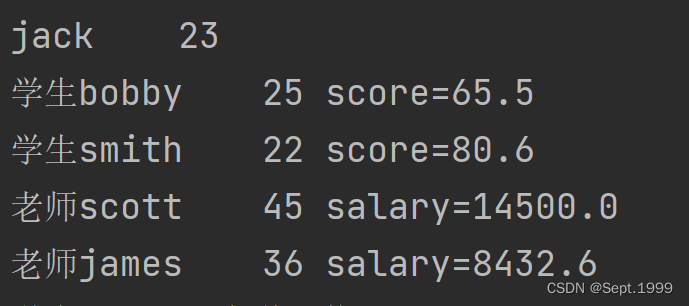
要求2
如何调用子类特有的方法, 比如Teacher 有一个 teach , Student 有一个 study怎么调用?
在Student类和Teacher类中创建子类独有的方法


思路分析
根据前面所学的知识,在向上转型后如果要调用子类独有的方法必须要将person[i]向下转型,
因为上述的person数组中的元素的运行类型有三种:Person、Student、Teacher,所以要先判断对象的运行类型,此时需要用到前面所学的instanceof(判断对象的运行类型是否为 XX 类型或 XX 类型的子类型)
main类中的代码
package com.hspedu.poly_.polyarr_;
public class PolyArr02 {
public static void main(String[] args) {
//新建一个int型一维数组有5个元素
//int[] arr = new int[5];
//新建一个Person型一维数组,有5个元素,即5个Person类的对象
Person[] person = new Person[5];
person[0] = new Person("jack", 23);
//向上转型
person[1] = new Student("bobby", 25, 65.5);
person[2] = new Student("smith", 22, 80.6);
person[3] = new Teacher("scott", 45, 14500);
person[4] = new Teacher("james", 36, 8432.6);
for (int i = 0; i < person.length; i++) {
//动态绑定机制,会根据运行类型去查找方法
//调用person[1].say()时,person[1]的运行类型是Student
//会从Student类开始查找调用say()方法
System.out.println(person[i].say());
// 如何调用子类特有的方法, 比如Teacher 有一个 teach
// Student 有一个 study, 怎么调用?
// 调用子类独有的方法,需要向下转型
//先判断运行类型是不是Student类
if (person[i] instanceof Student) {
/*
先向下转型,然后调用
Student student = (Student)person[i];
student.study();
*/
//将以上两步合并成一步
((Student) person[i]).study();
} else if (person[i] instanceof Teacher) {
//原理同上
((Teacher) person[i]).teach();
} else if (person[i] instanceof Person) {
} else {
System.out.println("你输入的类型有误,请重新检查");
}
}
}
}
先判断,然后向下转型,然后调用
Student student = (Student)person[i];
student.study();
将上面两句合并
((Student) person[i]).study();
运行结果
